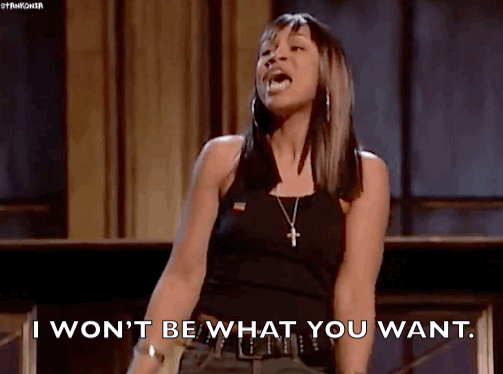Male gaze is when the audience sees the world
from the perspective of a heterosexual man. The male gaze is everywhere. It
hypersexualizes the female body, often focusing on female body parts considered
sexual in modern culture. In Author/Auteur:
Feminist Literacy Theory and Feminist Film, Magie Humm describes the female
in Marie- Guihelmine Benoist’s Portrait
of a Negress as “a black citoyen-therefore man’s social and political
equal-yet her naked breast and naked hands, nevertheless, display the black
female body as evidently available to a male gaze” (106).
As an audience we internalize these images and
messages, and normalize them. Creating one form of women, discrediting actual
women that exist in the real world. Women like Beyonce and Nicki Minaj are “idyllic”,
women and men cherish and aspire to be them. But these women are not real, they
are manufactured bodies of work by the hands of corporations that are most
likely led by old, white men. Take for instance Nicki Minaj. She entered the
mainstream music industry as a hyperseuxalized woman with assets that seem to
increase in tandem with her fame. Her latest video, Anaconda, demonstrates how the female body is really just a tool
for the male gaze. Her video devalues women and focuses their existences purely
for sexual purposes.
Oppositional gaze defined by bell hooks is the
ability for people of color, especially blacks to criticize and challenge the
messages they see. “The ‘gaze’ has been and is a site of resistance for
colonized black people…subordinates in relations of power experimentally that
there is a critical gaze, one that ‘look’ to document, one that is oppositional.”
(116) Challenging the system that exists creates a sense of agency for people
of color. Resisting the hegemonic system of sexism and patriarchy, spectators
gain power. Being critical of the images that are viewed, taking note of the repressive
messages and engaging in a discussion that places these issues to the
foreground. Oppositional gaze also results in products that resist images of
black womanhood erasure, the hypersexualized female body, and the otherness of
the black body.
There was a point in my life that I stopped
watching movies that did not have a person of color starring in the film. I did
not want to watch anymore, I was tired of not seeing anyone that looked like
me. My oppositional gaze was no gaze. I told this to someone, my stance against
movies without black people, and she said, “You’re missing out on so many
movies.” But I don’t think that the young lady I was speaking understood why I
was upset. Watching films with people perform roles that I cannot relate to,
and then I cannot even relate to them on a racial level was disheartening. For
me there were too many things distancing me from a film before I get the
opportunity to create a connection.
Maybe not looking is a bigger issue because it
limits the discussion that can happen after a viewing of a film. But it is
frustrating to be a woman of color, as John Berger wrote in Ways of Seeing, women consider
themselves “the surveyor and the surveyed…as the two constituent yet always
distinct elements of her identity as a woman,” I have to assume multiple roles
while rejecting the images I see everywhere. Below is a GIF of Sista Queen
performing a portion of Try Being a Lady.
There are women who do not want to become the caricatures of women that
permeate through media. Sista Queen does an amazing job of disassembling the
image of women, analyzing the images that are everywhere, and stating that she
is not that. She is a voice for the women who do not have a public platform, they
have something to say that is different and is worth listening to.
Work Cited
Berger, John. Ways
of Seeing. Britain: British Broadcasting Company and Penguin Books, 1972.
hooks,
bell. “The Oppositional Gaze.” Black
Looks: Race and Representation. Boston: South End Press, 1992. 115-31.
Humm, Maggie. “Auteur: Feminist
Literacy Theory and Feminist Film.” Feminism and Film. Edinburgh: Edinburgh University
Press, 1997. 90-110.
NickiMinajAtVevo.
"Anaconda." Online video clip. YouTube. YouTube, 19 Aug 2014. Web. 22
Feb. 2015.
SistaQueen. SistaQueen. stankonia.tumblr.com. Tumblr
22 Feb. 2015.

No comments:
Post a Comment